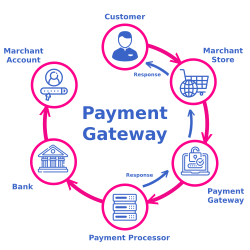
AirIQ API Integration
AirIQ is
a fleet management and telematics solution provider that offers services
related to vehicle tracking, asset management, and more. To integrate with the
AirIQ API, you'll typically need to follow these general steps:
1. Contact
AirIQ: Before you start integration, get in touch with AirIQ to discuss
your specific needs, obtain API documentation, and potentially request API
credentials such as an API key or access tokens.
2. Review
API Documentation: Familiarize yourself with the AirIQ API
documentation. This documentation will provide details on the available
endpoints, request and response formats, authentication methods, and any
specific requirements for using their API.
3. Set Up
Authentication: Depending on the API, you may need to set up
authentication. This can include using API keys, OAuth tokens, or other
authentication methods provided by AirIQ.
4. Development
Environment: Set up your development environment. This includes choosing
a programming language, libraries, and tools that are compatible with the AirIQ
API. Most APIs use RESTful endpoints, so you'll typically make HTTP requests
(GET, POST, PUT, DELETE) to interact with their services.
5. Code
Integration: Write code to interact with the AirIQ API based on the
documentation you've reviewed. This code should handle authentication, request
construction, and response parsing.
6. Test
Your Integration: Test your integration thoroughly to ensure that it's
working as expected. Pay attention to error handling, edge cases, and API rate
limits if applicable.
7. Error
Handling: Implement robust error handling in your code to deal with any
unexpected issues or errors returned by the API.
8. Data
Mapping: If you are integrating AirIQ data into your application, make
sure to map the data received from the API to your application's data model.
9. Performance
Optimization: Optimize your integration for performance and efficiency.
This might involve batching requests, caching data, and managing rate limits
effectively.
10. Security:
Ensure that you are following best practices for API security. This includes
keeping your API credentials secure, using secure connections (HTTPS), and
validating input data.
11. Monitoring
and Logging: Implement monitoring and logging mechanisms to keep track
of API usage and diagnose any issues that may arise in production.
12. Compliance:
Ensure that your integration complies with any legal or regulatory
requirements, especially if you are dealing with sensitive data.
13. Deployment:
Deploy your integration to your production environment, and continue to monitor
its performance and reliability.
14. Maintenance:
Regularly update and maintain your integration as needed. APIs can change over
time, so it's important to stay informed about any updates or deprecations made
by AirIQ.
Remember that the specific steps and requirements for
integrating with the AirIQ API may vary depending on the services and features
you want to use. Always refer to the most up-to-date API documentation provided
by AirIQ for detailed instructions and requirements specific to their API.






















